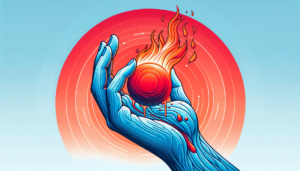Creative Outlets: How Art and Music Reduce Stress
Understanding Stress and Its Impact
Stress is a universal experience that affects individuals of all ages, backgrounds, and lifestyles. It can manifest in various ways, including emotional, physical, and mental strains. Chronic stress can lead to numerous health issues, including anxiety, depression, cardiovascular diseases, and a compromised immune system. Understanding how to manage stress effectively is essential for maintaining overall well-being. Among the most effective strategies for stress reduction are engaging in creative outlets such as art and music.
The Connection Between Creativity and Stress Relief
Research has consistently shown that engaging in creative activities can have a profound impact on mental health. Creative outlets allow individuals to express themselves, process emotions, and manage stress. Here’s how art and music play pivotal roles in reducing stress:
- Emotional Expression
- Art and music provide a medium for emotional expression. When words fail, colors and sounds can communicate feelings. Creating art allows individuals to explore their emotions, helping to untangle complex feelings that might contribute to stress. Similarly, music can evoke emotions and memories that facilitate catharsis.
- Mindfulness and Presence
- Both visual arts and music encourage mindfulness. The act of painting, drawing, or playing an instrument requires focus and attention, diverting thoughts away from stressors and anchoring the mind in the present moment. This practice of being in the here and now is fundamental in alleviating anxiety and stress.
- Cognitive Engagement
- Engaging in creative tasks stimulates the brain. Art and music activate various parts of the brain associated with problem-solving and cognitive functions. This stimulation can enhance mood and provide a mental escape from stressors.
Benefits of Art as a Stress Reliever
1. Therapeutic Art
Therapeutic art practices, including art therapy, have gained popularity in clinical settings. This structured form of art was designed to help individuals express feelings that may be difficult to articulate verbally. Trained therapists can guide individuals through the process of creating art, which can lead to breakthroughs in emotional processing.
Studies:
- Research published in the Journal of the American Art Therapy Association indicates that participants in art therapy show significant reductions in anxiety and depression.
2. Creativity Boost
Engaging in creative activities enhances overall creativity. Creative expression fosters a sense of accomplishment and can boost self-esteem. This is particularly important for individuals who may feel overwhelmed by negative thoughts or emotions.
3. Physical Benefits
Creating art can also have physical benefits. The act of painting or sculpting can serve as a gentle workout for fine motor skills. Additionally, engaging in art projects can lower levels of cortisol, the primary stress hormone.
Music as a Stress Relief Tool
1. The Power of Listening
Listening to music is one of the simplest ways to alleviate stress. Multiple studies have shown that music lowers blood pressure, reduces heart rates, and decreases levels of stress hormones. Classical music, in particular, has been noted for its calming effects.
Research Findings:
- A study published in The Journal of Advanced Nursing found that participants who listened to music experienced lower anxiety levels during medical procedures.
2. Active Engagement
Playing a musical instrument engages both the mind and body. It enhances hand-eye coordination and requires focus, leading to the same mindfulness benefits as art. The act of practicing an instrument can be challenging, but mastering a piece of music also provides a strong sense of achievement.
3. Social Interaction
Music has a unique capacity to bring people together. Group music activities, such as choir or band participation, foster a sense of community. This social engagement can alleviate feelings of isolation and enhance emotional support.
Integrating Art and Music into Daily Life
1. Setting Up a Routine
To reap the benefits of art and music in reducing stress, individuals can consider setting aside specific times in their weekly schedule for creative activities. Whether it be a painting class, drawing at home, or playing an instrument, consistency is key.
2. Creative Journaling
Combining art and music with journaling can create a powerful stress relief tool. Individuals can draw or paint scenes that represent their feelings while listening to their favorite music. This hybrid approach can elevate expression and deepen emotional processing.
3. Workshops and Community Classes
Participating in community-driven workshops can amplify the positive effects from arts and music. Many local organizations offer classes that are both educational and therapeutic. Joining a workshop fosters learning while also creating connections with others who share similar interests.
4. Private Creative Spaces
Creating a personal space for art or music can further enhance the therapeutic effects. Individuals should aim to personalize their areas with inspiring items—art supplies, instruments, and even visual reminders of their creative goals.
Exploring Various Art Forms
Each art form offers diverse modes of expression:
- Visual Arts: Painting, drawing, and sculpting provide tangible results of creative exploration. They can be therapeutic and help individuals translate their feelings visually.
- Digital Art: Digital platforms for graphic design and illustration allow for creativity without the mess. These formats expand possibilities, especially for tech-savvy individuals.
- Dance: While often overlooked, dance is a form of art that merges physical activity with creativity. It fosters a connection between the body and mind and is an expressive and liberating outlet.
The Science Behind Music and Art Therapy
Art and Music Therapy Methods: Professional therapists use various techniques based on clinical studies, but some common elements include:
- Creative Expression: Allowing clients to freely express themselves through their chosen medium. This process is not about the final product but about the experience and emotional release.
- Reflection: After engaging in creative activities, clients may reflect on their experiences and feelings, facilitating deeper understanding and healing.
- Skill Development: Therapists may incorporate teaching specific artistic skills, allowing clients to gain confidence and a sense of achievement.
Conclusion: Embracing Creativity for Stress Management
Art and music are powerful allies in the fight against stress. Engaging in these activities enables individuals not only to express their emotions but also to find joy, connection, and relaxation. With the growing body of research highlighting the therapeutic potential of creative outlets, it’s essential to encourage everyone to explore personal forms of expression. By nurturing creativity, one can cultivate a more balanced and fulfilling life.







